What Makes the CX Unique
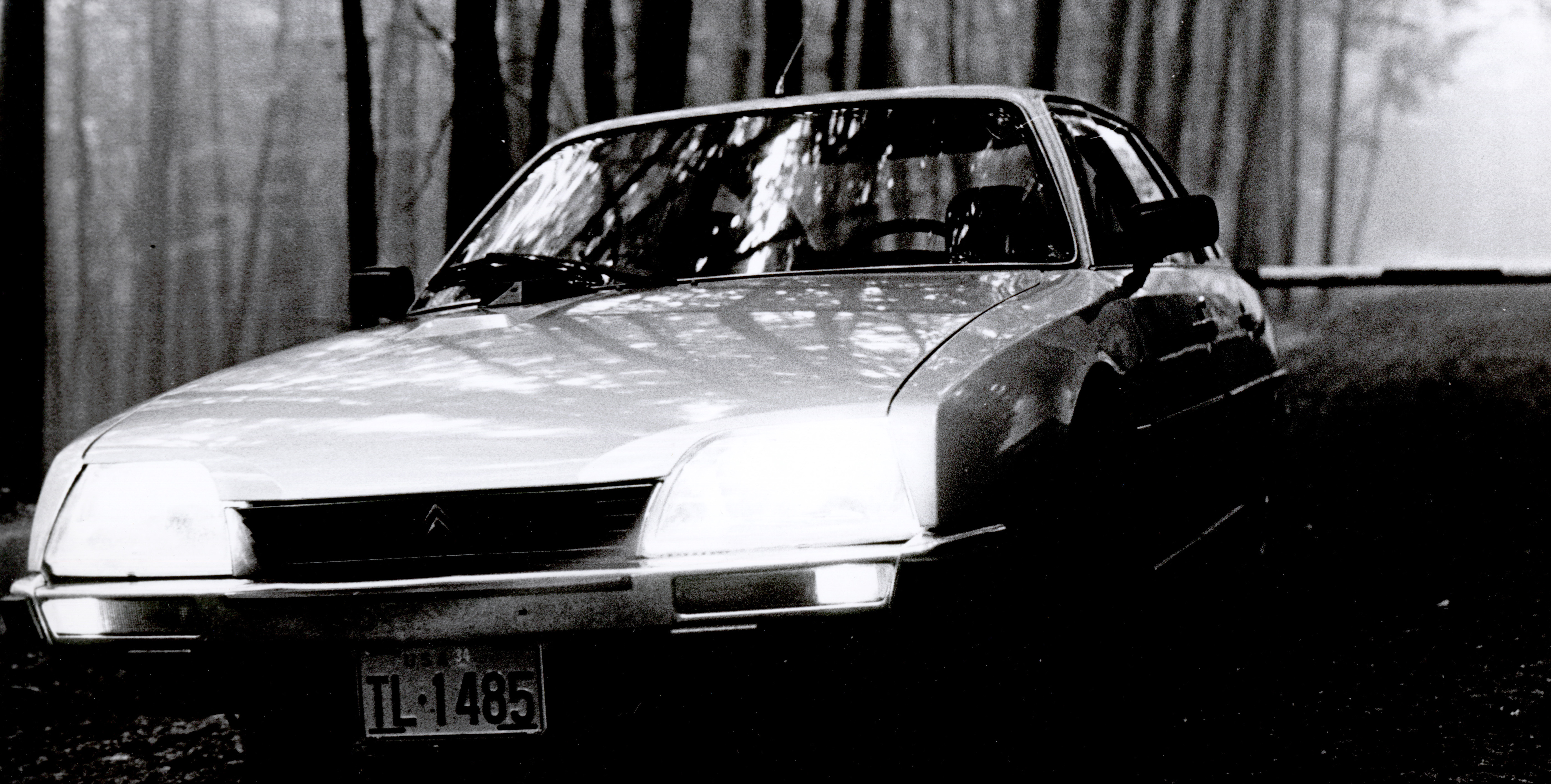
Paul G. Robinson
There are many, many reviews, discussions, videos, and books covering the CX, but I have yet to see an in-depth discussion about what makes the CX the way it is, other than when it was introduced in 1974. But who sees those reviews today? Watch or read reviews of high-end automobiles that use exotic materials or new engineering solutions and you get the full song and verse in their praise. The engineering behind the CX is no less worthy of discussion, and perhaps is even more so given that the car was designed and built for the mass-market, not as a high-end super expensive car such as the SM. Sadly, the car did not make inroads with the engine, but not for lack of trying. And perhaps it is this one factor that keeps the car from being fully respected and given all it is due.
A knowledgeable reader is thinking, hydraulics are unique to the car, get on with it! And certainly there’s a lot of discussion about the hydraulic system, that it is a unique characteristic - when compared with other makes of automobile. But not when compared within the Citroën model lineup at the time; there were three other models with hydraulic suspension, the D, the SM, and the GS. So we won't be discussing the hydraulic aspect of the suspenson as a unique feature of the CX.
So, what about aerodynamics? The aerodynamics of the CX are usually discussed as well. Given the name CX is the French term for coefficient of drag, it makes sense to think of the car as unique in this area. And certainly the CX is among the more aerodynamic cars built in mass production, but the Citroën SM is even better! And aerodynamics were introduced with the D model, so aerodynamics are not unique to the CX. You can find all you need on this subject concerning Citroëns here
If these things are not "unique" to the CX, what is? This is my list of what is unique about the CX, in no particular order. These features of the design, when combined with those mentioned above, make the CX the superior car it is. Keep in mind that the CX was a mass-produced, mass-market, 4-door family sedan, a class of cars that generally does not (especially in 1974) get the same attention that top-of-the-line luxury cars get, yet it competes with those cars very admirably. That said, the CX was the flagship for Citroën for many years.
My List
- Monocoque Chassis
- Suspension Geometry
- Ergonomics
- Steering
- Brakes
Monocoque Chassis
The chassis design is not a “unibody” chassis. Instead the body is a monocoque shell, the difference being that the skin of the car is stressed. However, the chassis gains additional strength from the use of front and rear sub-frames linked by longerons. Since the car uses these additional structural pieces it is technically a semi-monocoque chassis. See this explanation for more information. The monocoque chassis design lightens the car when compared to traditional frame construction, as had been used by the D and SM models. This resulted in the CX being about 200 pounds lighter than a comparable DS.
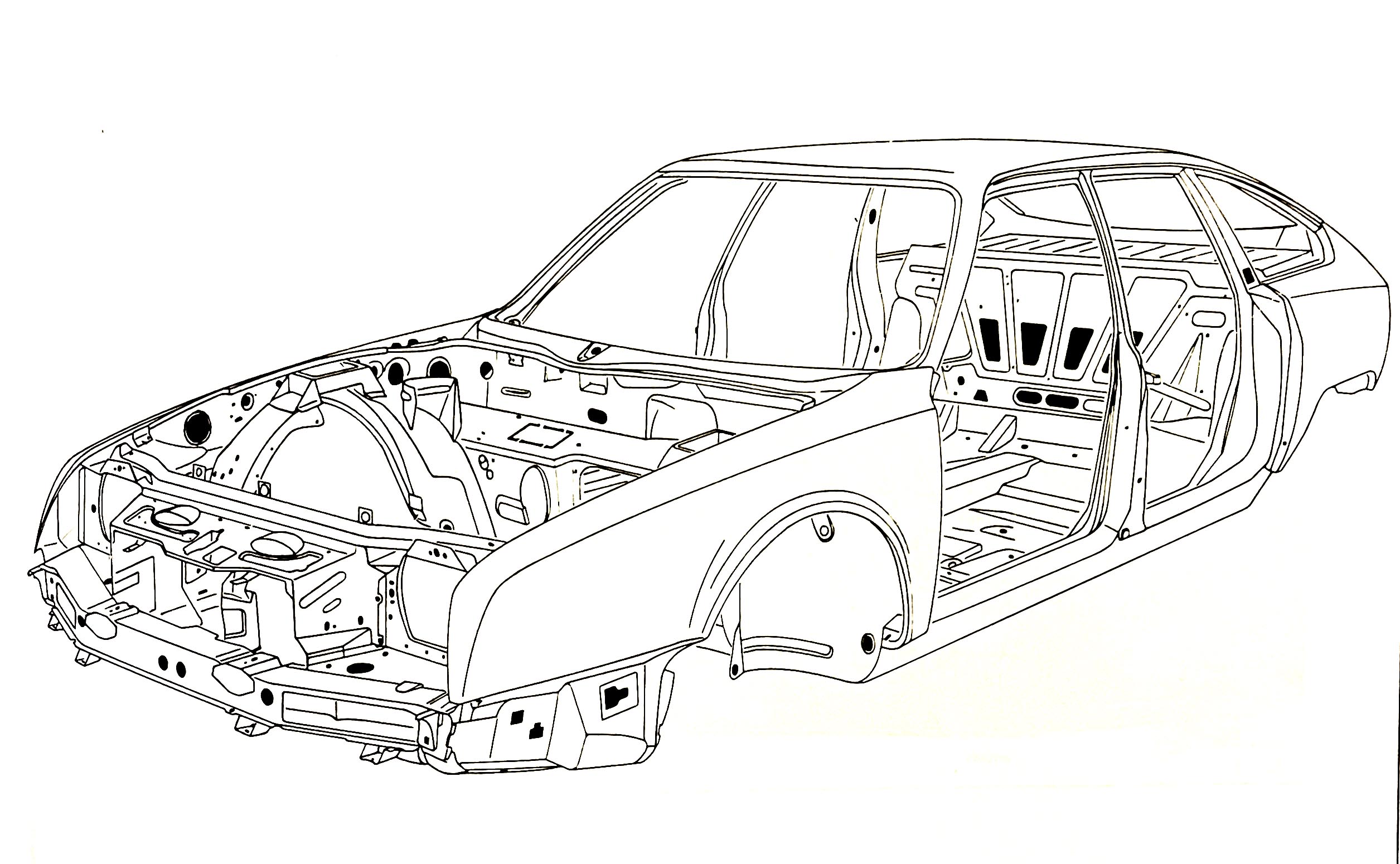
Drawing of the CX monocoque chassis sans subframes. |
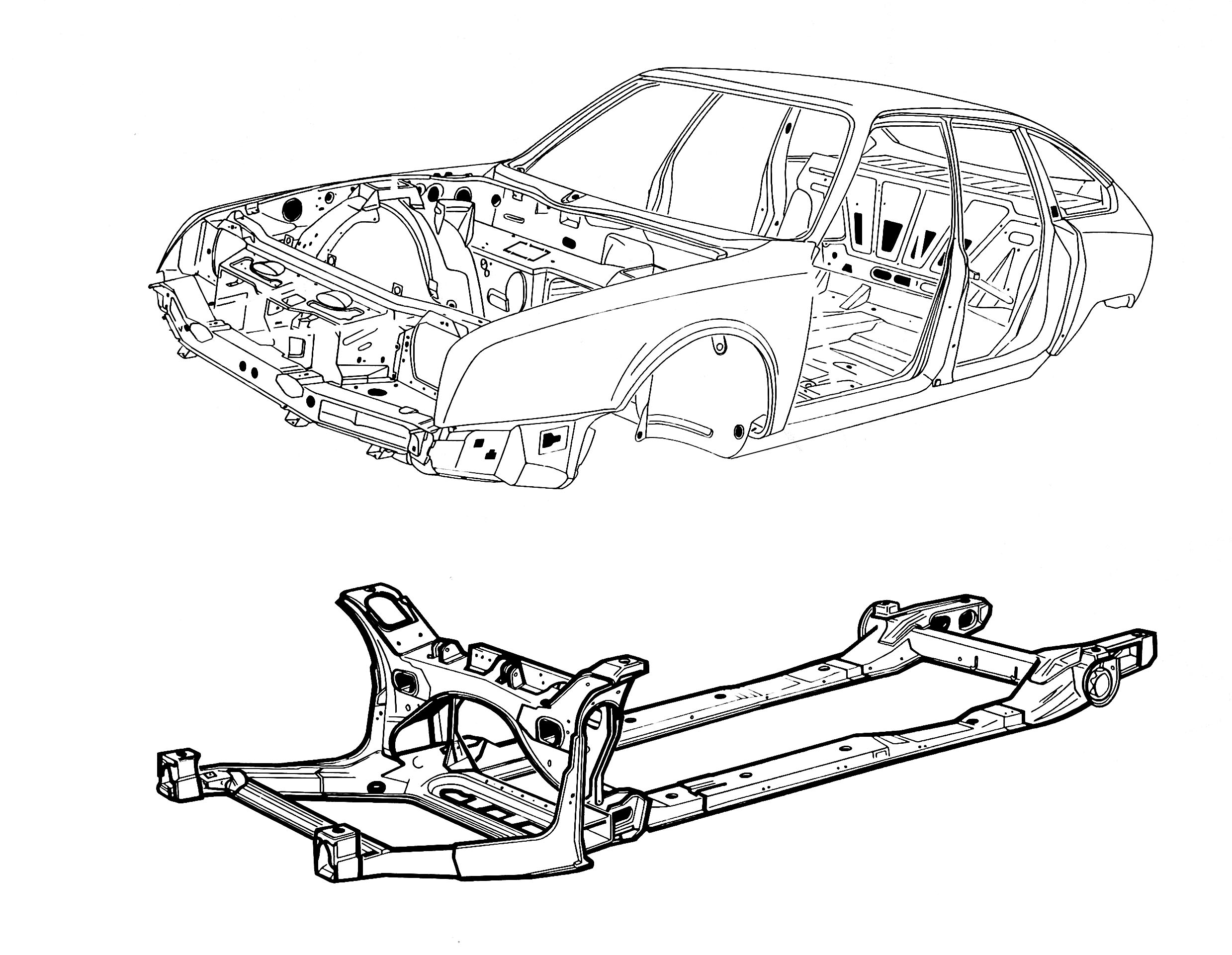
Drawing of the CX monocoque chassis with subframe assembly. |
The monocoque chassis was first used by Citroën for the ground-breaking Traction Avant, and came from the aircraft industry where it is used to save weight. |
Suspension Geometry
There are several aspects of the CX suspension that make it supremely comfortable, not the least being the use of the hydropneumatic system developed for the D model and expanded upon with the CX. The CX has exceptional handling for a family sedan and there are examples on video of the superiority of it’s design, such as this one:
This video is an old Swedish road test comparing the Audi 100, FIAT Croma, Mercedes W124 and a CX. The CX wins ride, handling and braking tests. The handling test shown is known as the "moose avoidance" test. The competitors to the CX were all much newer designs as this test was performed in 1986 when the CX design was already 12 years old!
However, what is very often missed by reviewers, and even many owners, makes this car even better than they realize.
Anti-dive braking
Anti-dive suspension geometry is not a new concept in automobiles. Look here for an exellent discussion on the subject. However, the D and SM models did not employ anti-dive, resulting in considerable squat on braking (the rear trailing arms and brake compensation design help keep the car level). The CX brought anti-dive to Citroën, but it was applied to a higher degree than most cars. This can be disconcerting to some drivers as the front fails to drop almost at all under hard braking, and can make the driver feel as if insufficient braking force is being applied. Combined with the lack of brake pedal travel this effect is very noticeable. The driver does adapt, but like so many other elements of the CX, adaptation is necessary. You can clearly see the anti-dive at work in the video, watch closely at how each car behaves during the braking test.
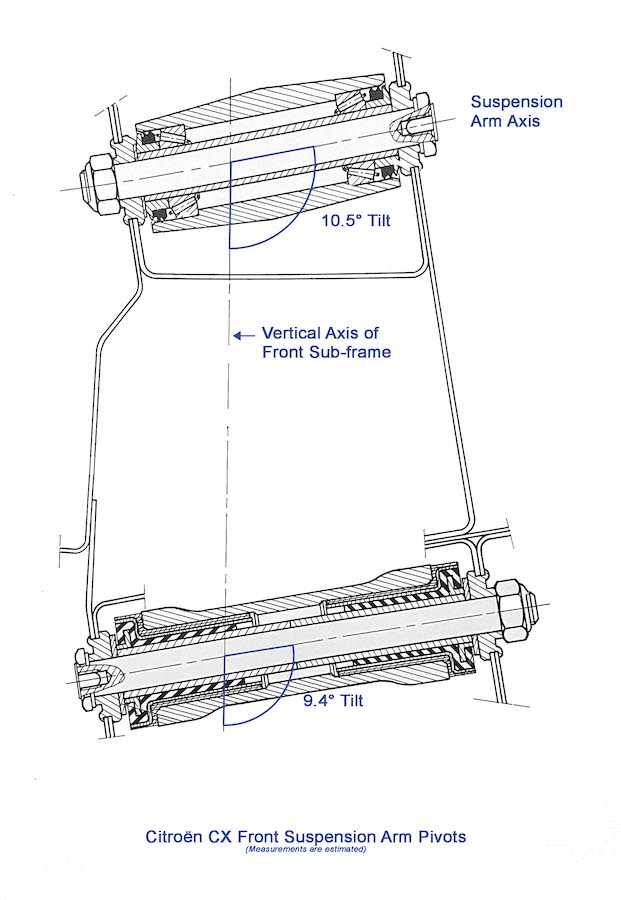
Drawing of the CX front suspension arm pivots. The tilt results in no dive at the front under braking.
As you can see in the drawing, the planes of the axis intersect well in front of the front wheel, and under the ground. I've not attempted to calculate the location of the intersecting planes as I don't have sufficiently accurate drawings.
However, the angle of the front suspension arm shafts leads to harsh sounds as the car goes over sharp bumps in the road. This harshness is not transferred to the car’s body, but it is noisy.
It should also be noted that the upper arm, as well as the rear suspension arms, are supported on tapered roller bearings. This was common on Citroëns and in some high-end models of earlier makes, but by 1974 most makers had abandoned this as too expensive, most use rubber bushings now. The rubber isn't necessary to isolate the suspension from the chassis, thus bearings are used that can be adjusted throughout the life of the vehicle.

Cross section drawing of the CX steering knuckle. This illustration shows the centerline (in red), and the steering axis (in blue). Extending the blue line to the bottom of the tire tread it will intersect the centerline.
Center-point steering
Another design element that makes the CX unique - when compared to other makes - is the center-point steering geometry (the Mercedes Benz W123 series is the only other example outside Citroën using center-point steering). The axis of the pivot point of the upper and lower ball joints (the blue line) intersects with the center line of the steering knuckle (the red line), essentially in the middle of the tire tread’s width. The result is that the tire/wheel do not easily deflect when traversing objects (rocks, curbs, etc.) that catch one side of the tire. Check this on any other car (other than a Citroën) and you will see the front wheels pivot in an arc.
Such geometry makes the car extremely stable. It must be noted that the steering is hydraulically locked as well, making it impossible to deflect the wheels on cars fitted with the DIRAVI steering. The two designs work together so the car only goes where the driver points it. Deep water, potholes and other common road conditions that may come on suddenly make no difference to the driver.
The ad in this video demonstrates how it works. Yes, it's a GS,
but the CX, D, and SM all behave the same!
The rear suspension uses trailing arms, making it very simple and quite compact. The rear suspension does not intrude into the trunk or passenger area at all, there is only the wheel well to allow the wheel room to move. These features (center-point steering and compact trailing arms) are used on all other Citroëns, so is not unique to the CX but worthy of noting while discussing the geometry.
Weight saving materials
Another aspect of the suspension design very frequently overlooked is the use of weight saving material in the suspension. The earlier Citroëns such as the D, SM and GS (to stick with the hydraulic models of the era for simplicity) used inboard front disc brakes. This saved tremendous weight at the wheel. Unsprung weight is important to the ability of the tire to stay in contact with the road surface, lower weight being desired. The CX, because the engine is transverse, could not take advantage of inboard brakes, presenting a challenge in weight savings.
Citroën used aluminium to lower the unsprung weight at the wheel. The entire steering knuckle, including the brake caliper, is made from aluminium. The front suspension arms are made of steel, for strength, and are the heaviest unsprung component of the suspension. The rear suspension arms, and rear brake calipers, are entirely aluminium making them amazingly lightweight.
Ergonomics
The interior design of the CX dates from the very early 1970’s. One of the main criteria of the interior designer, Michel Harmand, was the easy operation of major controls by the driver. This is a common theme of Citroën cars taken to a new level with the CX.
With hands on the wheel these controls are available at the driver’s fingertips:
- Turn signal
- Windshield wiper & washer
- Horns
- 4-way (hazard) flasher
- Fog lights
- Cruise control
- Headlight/parking lights
- High (main) beam flasher
- Instrument lighting dimmer
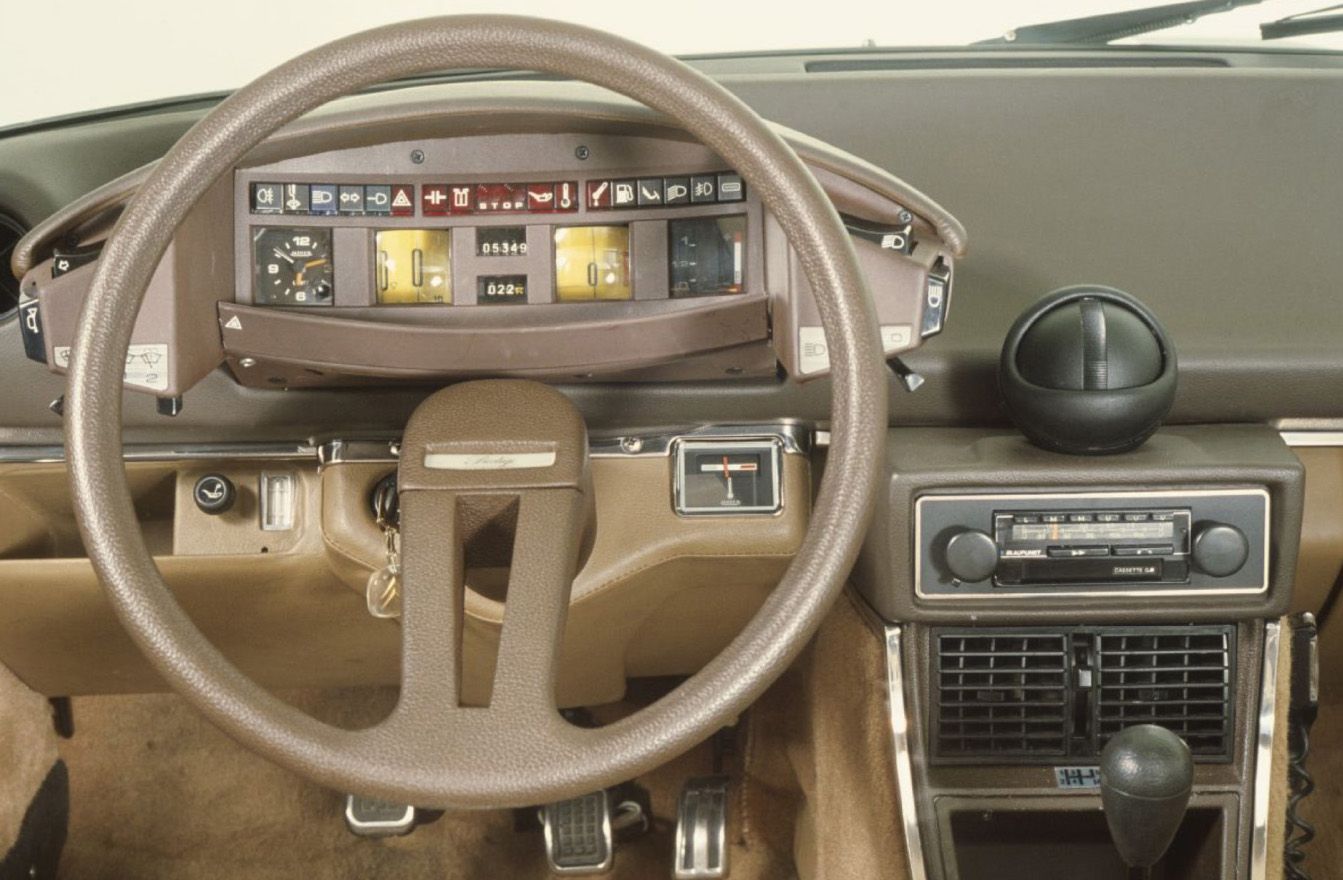
The CX instrument pod. The cruise control switch, not available on this early model, is positioned on the left side.
The only controls not at the finger tip are the heating and ventilation, rear window defroster, radio, and window switches. This was essentially unheard of at the time, and to this day many cars are not designed for this (in particular in modern cars the headlight on/off switch is on the dashboard, and hazard switches are frequently on the dashboard. Instrument dimmers are also on the dash).
Those controls not at finger tip are very readily to hand however, and designed to allow the driver to distinguish each control by touch, at least on the Series I models. The heating and ventilation controls are in the center console. Just dropping the hand in the center of the car puts them in your hand, and each lever is uniquely shaped. Not only does the lever’s position put the controls immediately to hand, the shape of each knob helps you know it’s function (fan speed, temperature, airflow position). The Series II models put the heating/AC controls further away toward the front of the console, easily seen by the driver and so easily manipulated. However, it should be noted the Series II radio was moved to the center console, a very poor location.
All of this means the driver does not need to take their eyes off the road. You remain fully engaged with the task at hand, driving the car perfectly down the road.
Steering
I know, all cars have a steering system, how is that unique to the CX? Well, because the CX is the first 4-door family sedan with fully powered self-centering, speed sensitive steering, that's why. Yes, the SM had the same system, but the SM is a 2-door super car with a fairly limited production run. But it did introduce the system and the CX refined it, reducing the quickness slightly, from 2.0 turns lock-to-lock on the SM to 2.4 on the CX.
The above video demonstrates the Citroën CX self-centering steering
The system uses fully powered steering, the steering rack is a pair of hydraulic rams that move back and forth. Pressure is controlled via valves that the steering wheel operate. The self-centering is achieved using a cam. The speed sensitivity is the result of a centrifugal control running off the differential. As speed increases the pressure applied to the cam for self-centering increases, making it harder to turn the steering wheel. When the hydraulic system is pressurized there is no mechanical connection between the steering wheel and the steering rack.
Brakes
In modern times disc brakes are not unusual, and take different forms. Citroën was the first to introduce disc brakes in a mass-produced family sedan, in 1955, but they were only used in the front. The SM added rear disc brakes in 1970. And the D, SM and GS all used fixed calipers.

Showing the front brake caliper. Notice the vented disc, highly unusual for a mass-market 4-door sedan. |
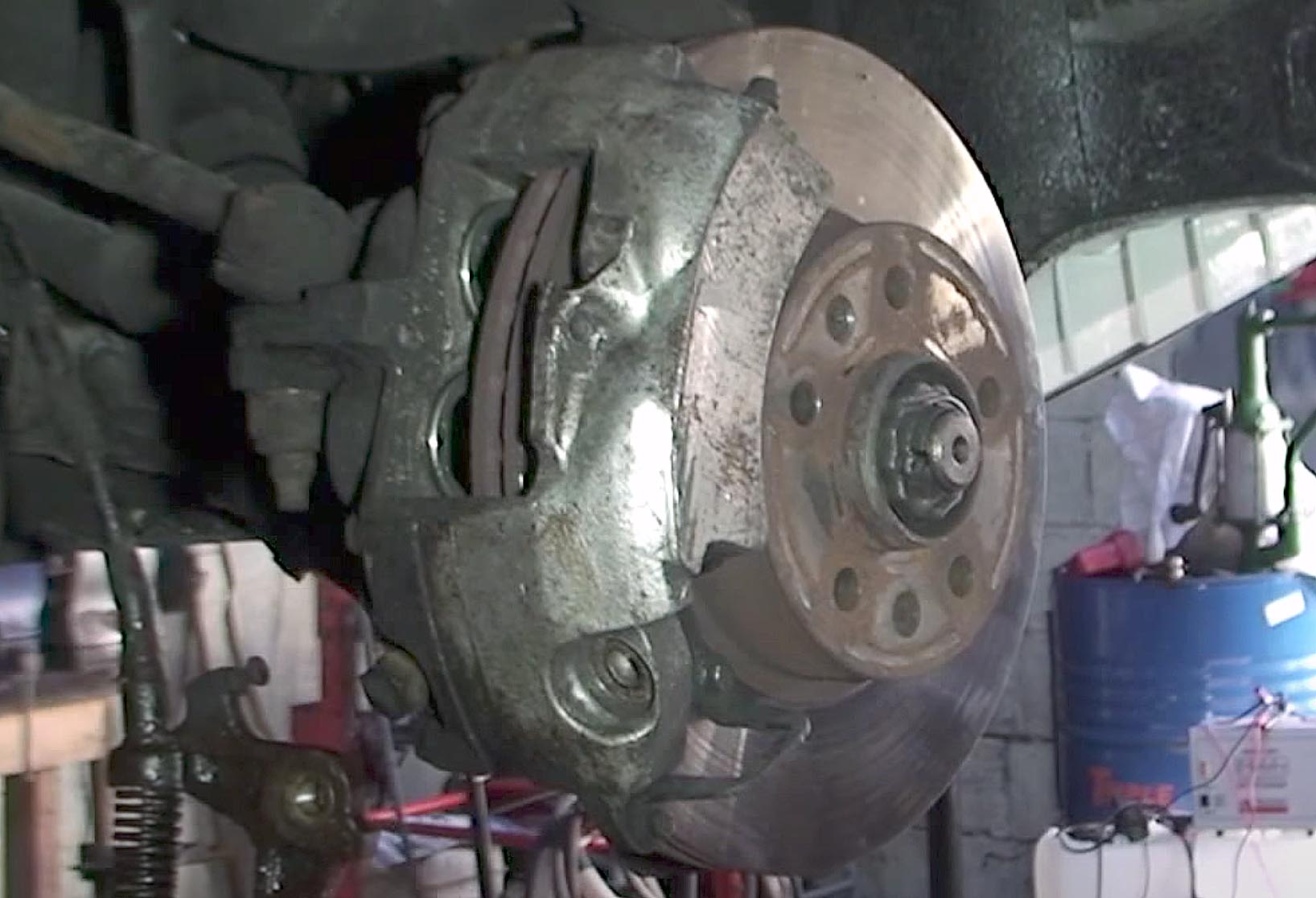
Showing two of the four pistons in the front caliper. |
At a time when sliding brake calipers were very common, and inexpensive, Citroën built the CX with four-piston fixed calipers in front, and two-piston fixed calipers at the rear. The fixed calipers are molded into the steering knuckle, so much less mass is required than having a bolt-on assembly, which contributed to the weight savings desired to keep unsprung weight low, as well as adding significant performance over the sliding caliper design. You may also notice brake pad wear warning wires, this feature was introduced on the D model far in advance of other manufacturers. |
Citroën provided vents to the front brakes on the D models, helping prevent brake fade, and the CX continued this feature using vented rotors, a much more expensive design, with ducts attached to the steering knuckle to direct air to the brakes. Couple the multiple piston fixed caliper with the hydraulic system developed by Citroën and you have quite formidable brakes!
The "unique" aspect of the CX brakes is their position at the wheel using fixed calipers, vented discs, and 4-pistons on a 4-door family sedan. All designed to equal or surpass the earlier models despite the different layout.
Summary
This list of what makes the CX unique has, I hoped, added to your understanding of why the CX was such a unique automobile. It is often said: “The devil is in the details” and the engineers and designers at Citroën took this to heart. They built a family sedan that is unsurpassed in it’s complexity, unique in many very important ways, and proved to be a leader in the industry for more than a decade. Please enjoy this wonderful video of a beautiful CX.
